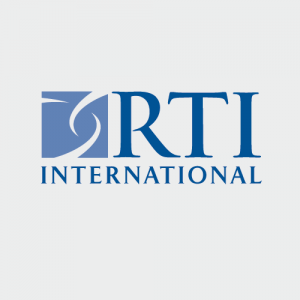COVID-19 in Somalia: Three Urgent Challenges Posed by Falling Remittances
Image

This post is part of a multi-part Marketlinks series sharing updates and lessons learned about how to help partner businesses protect themselves and recover in times of crisis. Read the previous post in the series.
As the business world has closed and countries have implemented lockdowns due to COVID-19, many migrant workers have been stranded in their host countries without jobs or income. They have less money to send back to their families and face increased challenges in sending it home because money transfer bureaus (MTBs) are closed or inaccessible. The World Bank is predicting a 20 percent drop in global remittances for 2020, a worldwide reduction of $109 billion.
In 2019, $2.7 billion in remittances was sent to Somalia from over one million diaspora members. With 40 percent of Somali households depending on remittances to survive, the impact in Somalia is expected to be more severe than in other countries. Half of urban Somalis receive remittances; many say that without them, they will not be able to afford food, education, and health care. Those few people that have savings in banks are withdrawing them for subsistence.
By early April 2020, Somali banks reported that remittances from some countries had ceased completely and that the overall decline was at least 40 percent and falling. International banks have long been fearful of handling cash destined for Somalia because of regulations concerning anti-money laundering (AML) and countering the financing of terrorism (CFT) and the risk of large fines for any errors. Somali banks and MTBs are often denied access to bank accounts and electronic payment systems by international banks. Consequently, they have little choice but to carry huge amounts of banknotes from diaspora host countries to financial centers, like Dubai and Nairobi, and finally onwards into Somalia. COVID-related airport closures, airline route suspensions, and quarantines now prevent the transfer of banknotes into Somalia.
The USAID-funded Somalia Growth, Enterprise, Employment, and Livelihoods (GEEL) project is working to address some of the most pressing challenges related to the reduction of remittances in order to bolster and safeguard financial institutions, businesses, and families during the COVID-19 crisis.
Challenge 1: Ensuring there is enough cash inside Somalia for the economy to function
In the international market, the MTBs and international banks cannot send payments through financial centers because the inward flow of banknotes into Somalia has stopped. Now, because banknotes cannot be moved in or out of Somalia, remittances can only be paid in cash to beneficiaries when they are balanced by sufficient domestic depositors of cash such as importers paying for purchases. With less cash on hand and increasing withdrawal requests from customers to pay for basic needs, Somali banks are struggling to meet the demand. Some banks have imposed limits to cash withdrawals. The restrictions are eroding customers’ confidence in the banks, further increasing demand for withdrawals. This is a vicious circle that could lead to a run on the banks.
What we’re doing about it: With the support of the World Bank, the Central Bank of Somalia (CBS) is implementing inter-bank electronic payment systems more quickly and using manual systems until the electronic ones are ready. This will enable inter-bank loans to move money from banks with surpluses to those with deficits. This will ensure that all banks have sufficient liquidity in all locations to support domestic payments and withdrawals and maintain confidence in the banks. The GEEL project is providing technical support to banks and monetary financial institutions (MFIs) to design products and processes so that they lend more and can maintain and improve access to finance. Innovations on product design include the introduction of repayment holidays and longer repayment periods, making additional finance available to cover cash flow shortages, and lending to enable investments needed to introduce new technology and change business models, distribution chains, and supply chains.
Challenge 2: Ensuring there is enough cash to pay for food, medical, and other essential imports
Another challenge is opening more electronic channels for inward remittances and payments for exports as well as outward payments for imports of commercial supplies of food, medical equipment, and other essentials. CBS is predicting a 35 percent fall in exports and a 20 percent fall in imports as a result of decreasing demand and closure of trade routes. If remittances fall by 40 percent there will not be enough money available to pay for even this reduced level of imports. Given Somalia’s dependence on imports for much of its food consumption needs and all of its medical supplies, large shortages of these critical goods are expected unless the flow of inward remittances and payments can be restored.
What we’re doing about it: Through the GEEL project, USAID is working to speed up the operationalization of CBS’ settlement accounts at central banks in the US, the UK, and other diaspora host countries. The settlement accounts will be used by Somali banks and their international correspondent banks to enable electronic international payments and avoid the need to transfer banknotes. Somali banks and MTBs are also being supported to develop correspondent banking relationships and open bank accounts in host countries.
Challenge 3: Persuading international banks to provide international electronic payments to Somali banks and MTBs
Somali banks and MTBs need to convince international banks that they know the identities of senders and recipients of remittances and international payments in accordance with international AML and CFT standards. Senders of remittances in US, the UK, the EU, and elsewhere already have robust identity tokens that can easily be verified and are used to access bank accounts. Without any robust identity tokens in Somalia, and with a culture based on personal knowledge and relationships rather than documented processes and systems, senders and beneficiaries in Somali cannot provide the identity verification that international banks require as part of their AML and CFT compliance.
What we’re doing about it: Receivers of remittances in Somalia can easily and quickly be given digital financial identities by banks, MTBs, and mobile payment service providers. Access to international payment systems can be restricted to those payment service provider that have implemented robust digital identities alongside strong AML and CFT processes. GEEL is working to pilot a digital financial identity project in partnership with a bank, using an off-the-shelf digital identity solution that will be implemented quickly at low cost and then scaled.
Learning and adapting
As with any major development challenge, there is no one simple solution to fix the financial gap caused by falling remittances to Somalia. USAID, through the GEEL project, is helping to blunt the economic impact of COVID-19 by supporting financial institutions to offer more flexible products and policies and exploring the use of smart technologies to overcome historical challenges. We are also contributing to Somalis’ ability to cope with, and build resilience to, the current COVID-19 crisis by facilitating the flow of remittances.
Thanks to pre-existing partnerships, through GEEL USAID is able to direct efforts in the finance sector to help ensure that remittances continue to support the economy of Somalia during the COVID-19 crisis and help it rebound in a better condition afterward.



